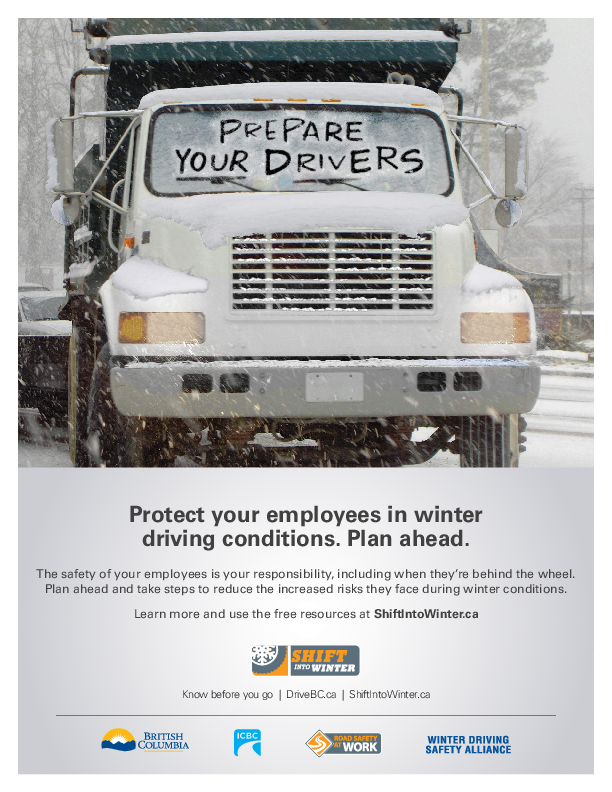
Stay Focused to Stay Safe
It’s been a long shift of driving already and there are more hours ahead.
You’re alone in the cab and as the pavement rolls by, your mind starts to wander to thoughts of home and family. Why doesn’t Ethan have more friends? Will Meli make the team? How is Mom coping now she’s on her own? I wonder what they’re all doing right now. Nagging thoughts that can creep into your mind at any time, but especially when you’re away from home, feeling isolated from what’s happening and frustrated because you aren’t there to take action.
Being stressed makes you take a big bite from the burger on your lap and a long gulp from your soda. When the traffic report on the radio says there’s a big accident ahead, you punch at your GPS to look for a new route. Meanwhile, you can feel a spasm starting in your lower back and a headache creeping up your neck.
Distraction comes in many forms when you’re driving. Talking and texting on the phone are two major attention-grabbers, but eating, drinking, physical discomfort, GPS’s and, yes, even worrisome thoughts of home can all pull your focus from the road. According to WorkSafeBC: “Distractions create situations and hazards that can be prevented. When combined with a constantly-changing road environment, performing other tasks while driving can result in errors that can have tragic results.” Tragic results that are reflected in ICBC statistics: on average, 76 people die every year in crashes where distracted driving is a contributing factor.
As a responsible professional aware of the dangers of distracted driving, you may be turning your phone off and stowing it out of sight, but that’s only the first step. The following SafetyDriven tips and resources will help you recognize potential hazards and create new habits to avoid distractions while driving.
The two-part article Steps to Eating for Energy explains that when, what, and how you eat affects your ability to stay alert and focused. While hunger itself can be distracting, stocking up on junk food at a fast-food outlet and eating while driving is not the answer. Getting out of your vehicle to eat gives you a physical and mental break from driving and prevents you from juggling hot food and boiling beverages while you wrestle with the wheel. Don’t be that guy trying to open the ketchup packet with his teeth during a red light!
When you’re stressed by long hours of driving and loneliness, you may want to turn to junk food for comfort. Bad idea, according to Chronic Stress and Eating Tips for Truck Drivers, because the better nourished you are, the better you are at coping with stress. This article provides a number of diet strategies to help your body manage stress, such as limiting caffeine, sugar, and fat, and boosting water, vitamin C, and magnesium. Eating right can also help combat fatigue, another challenge for professional drivers.
It’s hard to keep your mind on your driving—or anything else—when you’re in pain. Unfortunately, being a professional driver can contribute to backaches, headaches, shoulder pain, digestive upsets, and other discomforts. On the Road to Comfort discusses some of the causes of drivers’ pains and how you can prevent or relieve them.
An effective and easy way to deal with muscle tension and aches is through stretching. Two free online videos, The Benefits of Stretching and Cab Stretching, explain why stretching helps the body and provide 10 quick and simple stretches you can do inside your parked vehicle or beside it.
Even when you’ve taken positive steps to eliminate distractions in the cab like eating, drinking, and physical discomforts, you may still find your thoughts drifting from the business at hand. This mental distraction is natural but no less dangerous. Removing the Temptation of Distracted Driving explains that: “Inattentive blindness is a sensation which causes people to miss things that are directly in front of their eyes. Once your mind is focused on anything other than driving, you’re at risk.”
Is there anything you can do to prevent mental distraction? What Distracted Driving Really Means suggests that you start by taking a deep breath and clearing your thoughts: “Remember, whatever is on your mind, you can’t do anything about it while you’re driving. Wait until you’re finished driving for the day to deal with it.”
Meditation is another way to help yourself let go of distracting thoughts. Meditation is not just for hippies or hermits, it’s a powerful mind-discipline exercise that can benefit everyone. It lowers stress, anxiety levels, and blood pressure, promotes a sense of well-being and mindfulness, and allows you to cope better with stressful situations. Find a Quiet Spot to Park Your Truck is a beginner’s guide to meditation for professional drivers.
For more SafetyDriven resources to help you cope with stress, loneliness, and other mental health issues, check out:
Latest Resources
Shift into Winter Poster
Road Safety at WorkPrint Shift into Winter poster(s). Place them in your lobby, lunchroom or other high- ...
Wildfires Affect Drivers and Vehicles, Increasing Risk
Road Safety at WorkStay off the road if you can. If you have to go, have a plan, says Road Safety at ...

